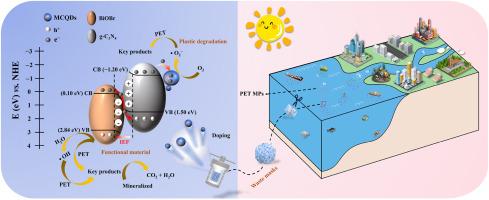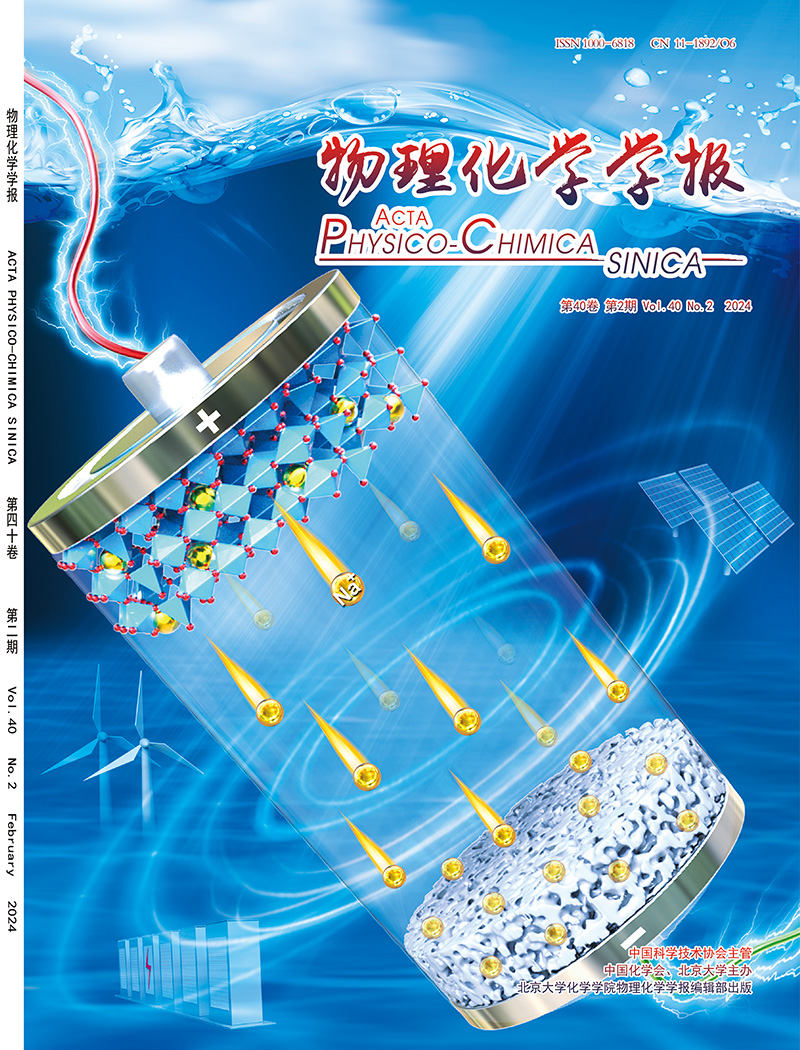Waste medical mask-derived carbon quantum dots enhance the photocatalytic degradation of polyethylene terephthalate (PET) over BiOBr/g-C3N4 S-scheme heterojunction
IF 13.5
2区 化学
Q1 CHEMISTRY, PHYSICAL
引用次数: 0
Abstract
The coronavirus disease 2019 (COVID-19) pandemic has increased the necessity of medical masks, and to date, many waste masks have been discarded without being reprocessed, causing environmental harm. PET, a commonly used plastic product, presents certain hurdles to its natural degradation. In this work, waste medical masks were converted into carbon quantum dots (MCQDs) with blue fluorescence emissions using a simple solvothermal process and then doped into BiOBr/g-C3N4 composite material to construct S-scheme heterojunctions for PET degradation. Density functional theory (DFT) calculations revealed that an interfacial electric field (IEF) was formed between g-C3N4 and BiOBr. The findings demonstrate that the MCQDs, as a cocatalyst for electron transmission and storage, encourage S-scheme heterojunctions to further separate photogenerated electrons and holes. Levofloxacin (LEV) was used as a molecular probe to visually compare the catalytic activities of various catalysts. These catalysts with different photocatalytic activity were then used to degrade PET. The findings demonstrate that the degradation efficiency of PET over the BiOBr/g-C3N4/3MCQDs in seawater is 39.88 ± 1.04 % (weight loss), which is 1.37 times higher than that of BiOBr/g-C3N4, and also better than those reported in most of the literature. Free radical capture tests, electrostatic field orbital trap high-resolution gas chromatography-mass spectrometry (HRGC-MS), and ultra-performance liquid chromatography-mass spectrometry (UPLC-MS) experiments uncovered and briefly revealed the key products in the photocatalytic degradation of PET, as well as the relevant mechanism of photocatalytic degradation of PET. The degradation products are expected to become precursors for the further production of polymers and medicines, etc. This study offers fresh perspectives for the creation of innovative photocatalysts for the ecologically benign breakdown of PET, which helps to further lessen environmental damage caused by microplastics (MPs) and enhance resource sustainability.

废弃医用掩膜衍生的碳量子点在BiOBr/g-C3N4 S-scheme异质结上增强了对聚对苯二甲酸乙二醇酯(PET)的光催化降解
2019冠状病毒病(COVID-19)大流行增加了医用口罩的必要性,迄今为止,许多废弃口罩未经再处理就被丢弃,造成了环境危害。PET是一种常用的塑料制品,其自然降解存在一定的障碍。在本研究中,利用简单的溶剂热法将废弃医用口罩转化为具有蓝色荧光发射的碳量子点(MCQDs),然后将其掺杂到BiOBr/g-C3N4复合材料中,构建用于PET降解的S-scheme异质结。密度泛函理论(DFT)计算表明,g-C3N4与BiOBr之间形成了界面电场(IEF)。研究结果表明,MCQDs作为电子传输和存储的助催化剂,促进S-scheme异质结进一步分离光生电子和空穴。以左氧氟沙星(LEV)为分子探针,直观比较了不同催化剂的催化活性。然后将这些具有不同光催化活性的催化剂用于降解PET。结果表明,PET对海水中BiOBr/g-C3N4/ 3mcqds的降解效率为39.88±1.04%(失重率),是BiOBr/g-C3N4降解效率的1.37倍,也优于大多数文献报道。自由基捕获试验、静电场轨道阱高分辨率气相色谱-质谱(HRGC-MS)和超高效液相色谱-质谱(UPLC-MS)实验揭示并简要揭示了PET光催化降解的关键产物,以及PET光催化降解的相关机理。降解产物有望成为进一步生产聚合物和药物等的前体。本研究为PET生态良性分解的创新光催化剂的创造提供了新的视角,有助于进一步减少微塑料(MPs)对环境的破坏,提高资源的可持续性。
本文章由计算机程序翻译,如有差异,请以英文原文为准。
求助全文
约1分钟内获得全文
求助全文

 求助内容:
求助内容: 应助结果提醒方式:
应助结果提醒方式:


